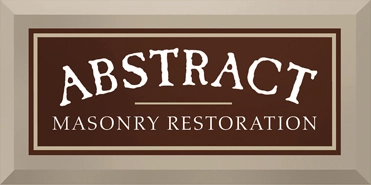To classify as “historic,” your structure should have at least 50 years of life. Building repair and restoration are important for preserving architectural styles, as well as representing the culture of people and places.
Masonry in architecture can include brick, terra cotta, stone, concrete block, cast stone, and the mortar used to bind these materials. While all are designed to withstand the elements, inevitably they’ll need some repair or restoration.
Masonry Repair versus Restoration
How do you know if your home is in need of masonry repairs versus more extensive masonry restoration? There are some tell-tale signs to look for.
Masonry Repairs
If you see cracked, chipped, or flaking bricks, you can usually remedy the problem with some surface repairs. Damaged or discolored mortar is also another less-invasive fix you don’t need to shy away from.
These issues can be patched and plugged to repair the look and function of your masonry. Some bricks or stones may need to be replaced, a process that involves careful color-matching. It’s not a long-term solution for improving the strength of a structure, but it can add years to its life.
Mortar lasts about 25 years, while bricks can withstand 100 years or more. This means it’s normal to see damage to mortar long before the stones fail. Since mortar is designed to be more permeable than brick, it acts as a cushion when bricks need to expand and contract. This wear-and-tear usually isn’t too much to worry about as long as it’s addressed promptly.
Regular repairs can prevent the need for full-scale restoration projects, since patching mortar or bricks can be a less labor-intensive project than replacing damaged masonry. Masonry repair still involves skill, since matching color and texture does take precision.
Some surface repairs do require a deeper look at layers underneath, ensuring there’s no damage to the structure due to cracks, chips, or holes in the masonry work. Rely on an experienced building restoration expert to help you gauge the extent of damage to your historic masonry.
Masonry Restoration
If a significant section of a building is failing, it’s probably time for restoration. This process involves fixing more than just what’s visibly damaged and can extend to replacing an entire wall for structural integrity. Don’t let these problems overwhelm you, though! With the right building restoration experts on your team, your home can resemble its original glory over time.
In building restoration, damaged materials are removed and replaced with new ones that match the style of the originals. Usually, the intention of restoration is to improve a structure’s integrity and give it a longer lifespan. With continued inspections, your restoration should give you many more years of protection from the elements, as well as being a beautiful example of historical architecture.
Ways to Use Masonry in Design
Where might you see examples of historic masonry in your home? There are applications beyond sturdy brick walls!
Your home might feature a stone fireplace, masonry work around a woodstove, or perhaps brick flooring. Indoors or out, masonry in design is often worth saving for its structural and aesthetic benefits.
Exposed brick walls aren’t just for modern, city apartments. Repairing or restoring a section of a brick wall inside your home can complement any design style. If you really can’t get on board with the style of the brick, consider removing existing paint, or adding a stain to make it work.
Repurposing historic bricks, stones, or even terra cotta tiles are another way to honor the history of your home. Plus, upcycling materials is budget-friendly. You can consider using old bricks to create accents elsewhere on your property, having them serve as pavers for a walkway or garden border. If you have stonework that can’t be saved, salvage the rocks and use them in hardscaping on your property.
Types of Masonry
We mentioned the types of masonry that need routine inspection, occasional repairs, and restoration. Here’s a quick look at the similarities and differences between masonry materials.
Brick
Bricks are burned clay. They are formed in different classes, referring to their different finishes. Their lifespan is known to range from 25 to 100+ years.
Concrete
Larger than bricks, concrete is another man-made masonry material. Without proper weather-proofing, concrete does deteriorate with prolonged exposure to water. However, you could still be looking at 100 years of life.
Terra Cotta
Terra cotta translates to fired Earth. It’s fired clay that can be used in making pottery, floor, wall, and roof tiles. It’s fireproof and can last 50 to 100 years, depending on its use.
Stone
Since stone is a natural (vs man-made) material, it can last 300 to 1,000+ years when used in architecture. Rough-hewn or polished, it’s versatile and strong.
Preventing Damage to Masonry
Invest in proper installation and materials to avoid problems with your masonry sooner than later. The designer of your project should be able to properly place joints in your masonry and give directives to the masons themselves. Expansion joints will allow your home to respond to changes in temperature without excessive or premature cracking.
If you’re worried about how masonry joints will look, keep in mind that proper placement can accommodate the need for joints without sacrificing aesthetics. Wherever they’re placed, remember that inspections of the joints and surrounding masonry are key to preventing damage.
For the best in Salt Lake City restoration, contact the experts at Abstract Masonry.
